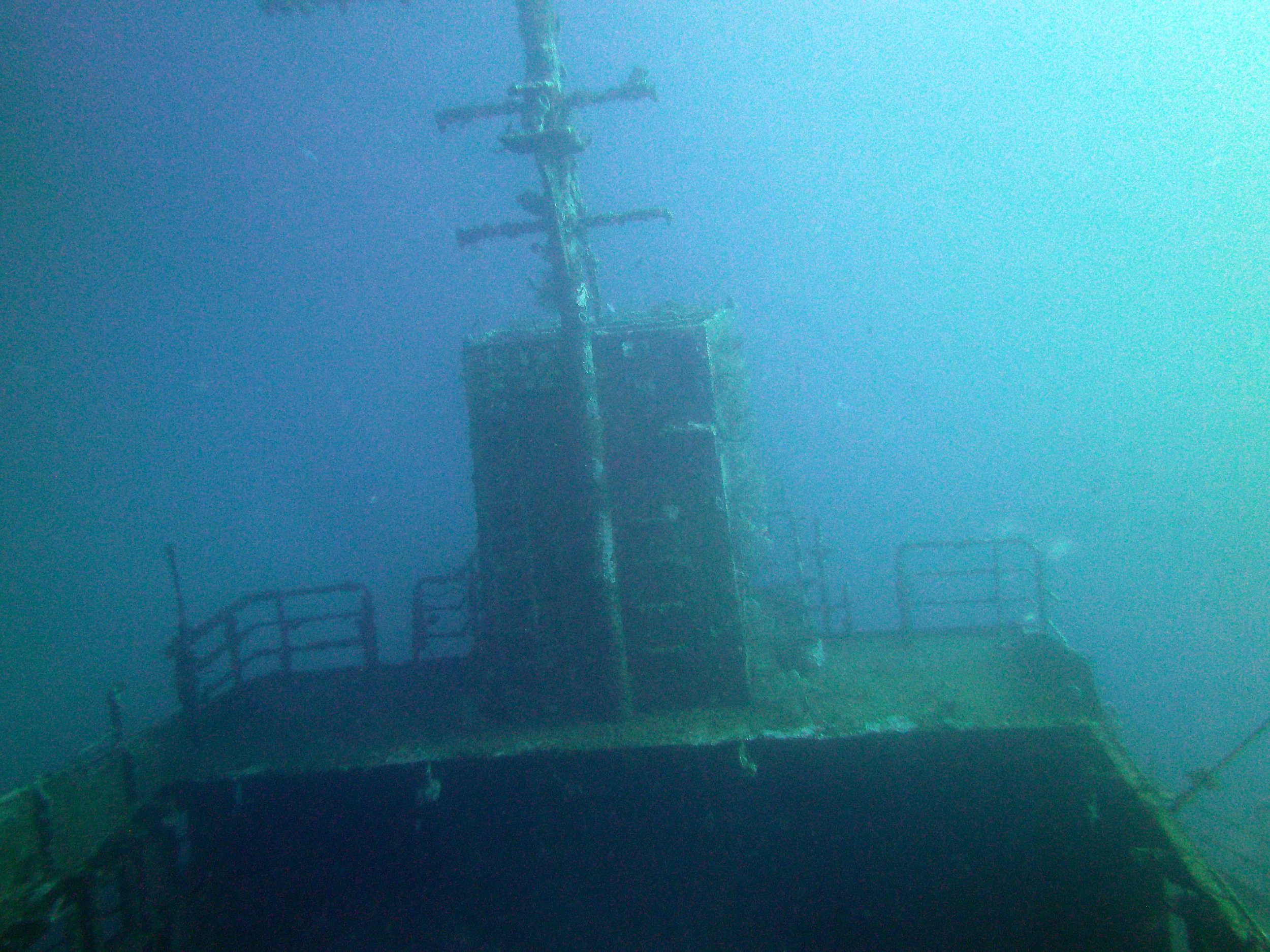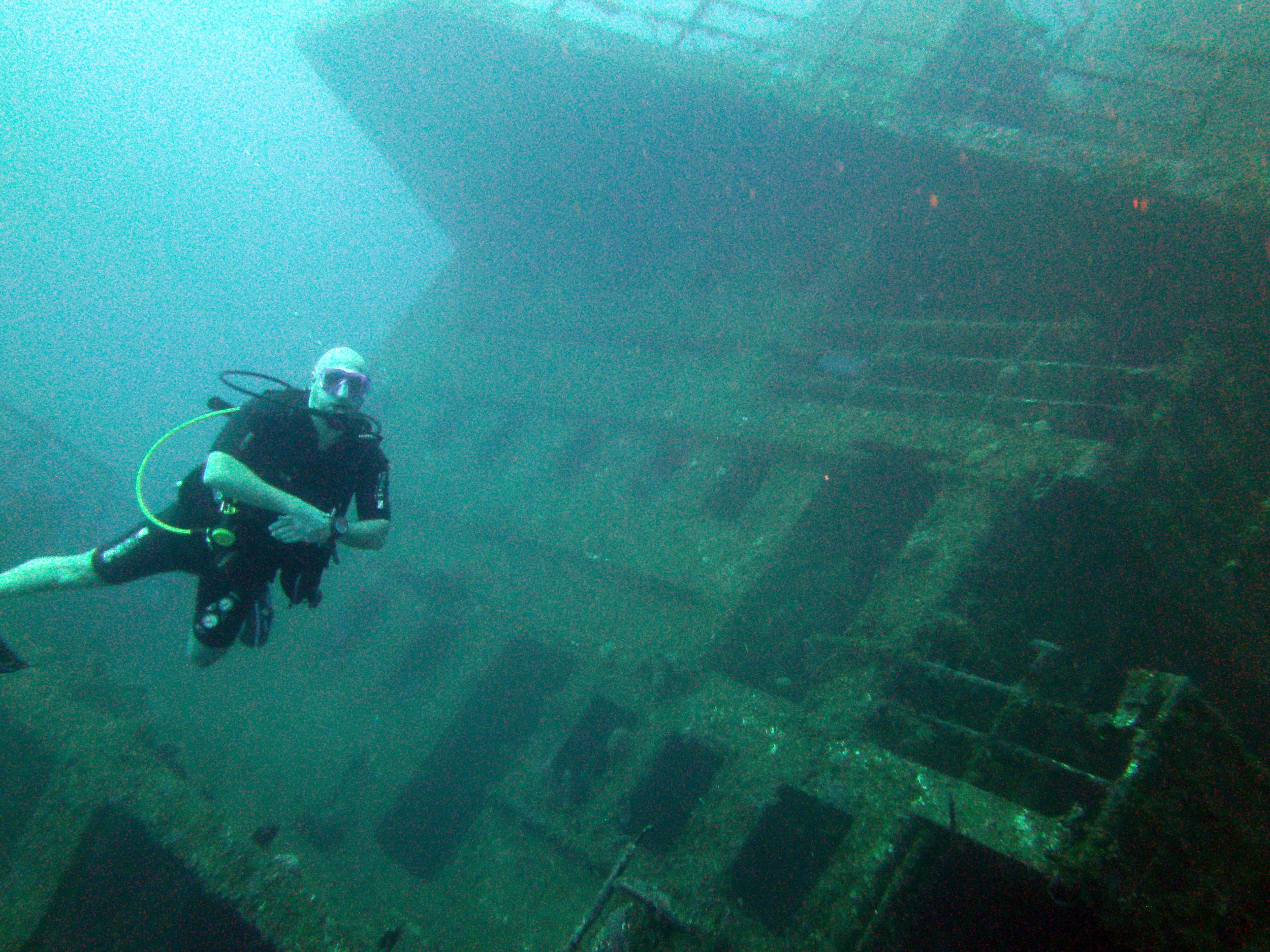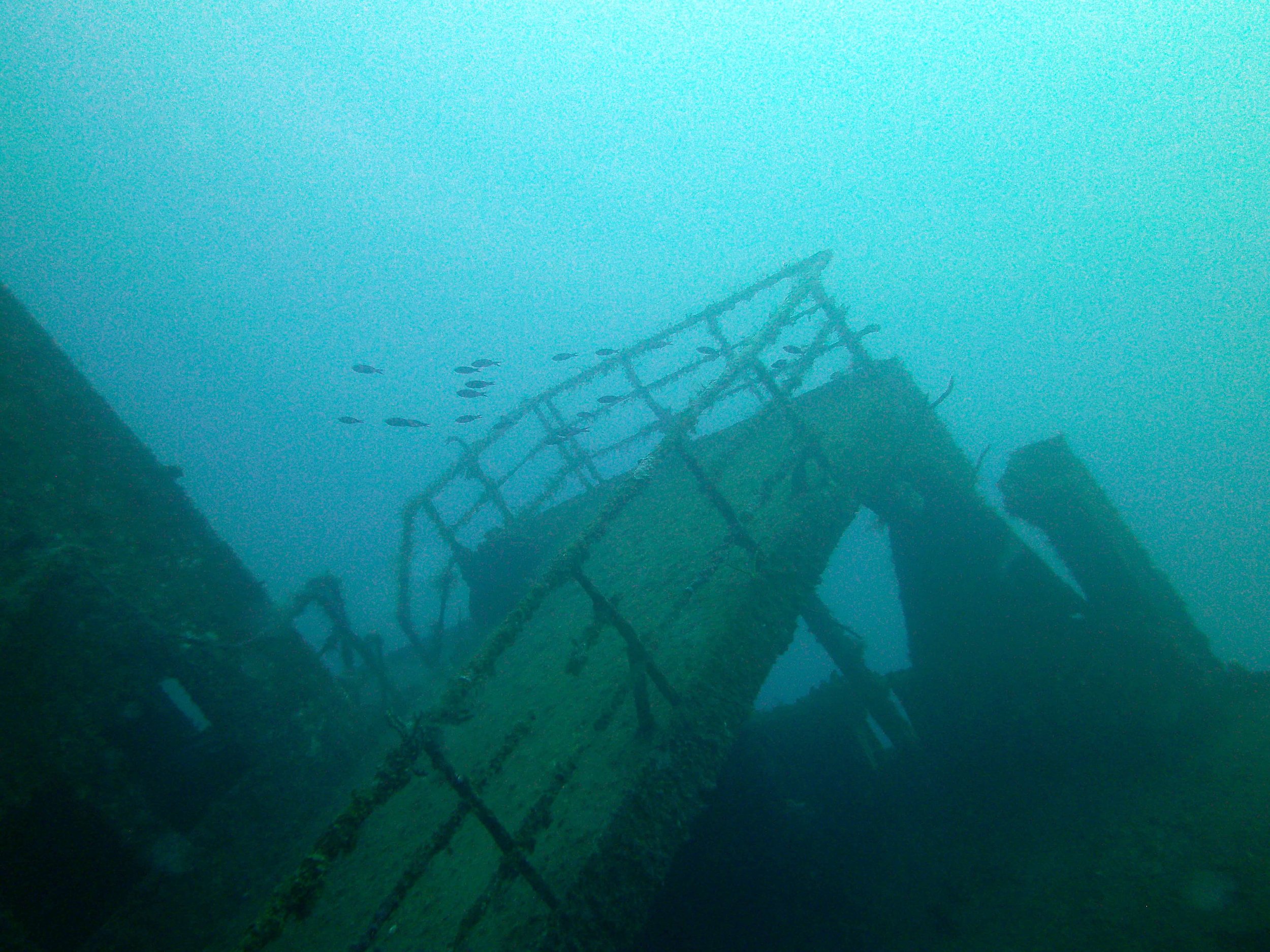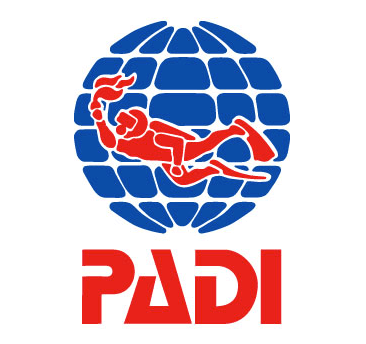How Being a PADI Rescue Diver Changes You
Being a PADI Rescue diver is about giving you the knowledge and skills to better care for yourself as well as other divers both in and out of the water. Divers describe this course as the most challenging, yet rewarding courses they have ever taken. If you're considering diving in, here's what you need to know about becoming a Rescue Diver.
Being a Rescue Diver is about giving you the knowledge and skills to better care for yourself as well as other divers, both in and out of the water. Divers describe this course as the most challenging, yet rewarding course they have ever taken. If you're considering diving in, here's what you need to know about becoming a PADI Rescue Diver.
It Changes Your Perspective
The PADI Rescue Diver course teaches you how to prevent and manage problems in and out of the water. We teach you how to spot warning signs that a diver might be nervous, unwell or potentially about to panic. This ability to anticipate a risky situation, whether it's from other divers or yourself, is extremely valuable. Now you're aware and engaged in a whole new way when you go diving - and we don't just mean in the water! From being on land, to the boat, to equipment, you now see things from a different perspective. Even your outlook and criteria on how you choose dive centers may be different. Together, all of these elements lead you to going diving with far more freedom and increased capabilities as a PADI Rescue Diver.
It Increases Your Confidence
With this new perspective, expect to feel a new level of confidence as a recreational diver. We teach you how to identify possible scenarios like a tired diver, panicked diver and even a non responsive diver and how you would respond to each accordingly. By learning these skills, you are now equipped with the knowledge to help others, and a greater self-awareness in recognizing your own potential problems. This increase of confidence, and knowing that you can help others if needed, is a priceless feeling you can take with you anytime you go diving.
You Become a Better Buddy
Which divers have you admired? All divers have, at some point, wanted to become a better diver. For many, it's the desire to improve buoyancy or air consumption, but as more experienced divers can tell you, it's all about having a good dive buddy. During this course, you learn to become a better buddy by practicing problem solving skills until they become second nature. Keep in mind, that even when you go fun diving, there will likely be more qualified diving Professionals around you like a PADI Divemaster or Instructor. For those divers interested in becoming a PADI Professional, the Emergency First Response & Rescue course is usually the first step in doing so.
Breaking Down the PADI Rescue Course
Rescue students on a dive with Roatan Divers
The PADI Rescue Diver course takes roughly three to four days.
Through knowledge development and rescue exercises, you learn what to look for and how to respond. These scenarios take place underwater, at the surface, and even extend to the shore. Finally once you have practiced how to handle these scenarios, you will go on two open water dives to reinforce your new knowledge and skills.
One of the most fun elements to the PADI Rescue Diver course is the instructor's ability to get creative in how they test your response time and thought process. The goal is to simulate as closely, but safely as possible, potential rescue situations. The Emergency First Response (EFR) Primary & Secondary Care is a prerequisite along with being a PADI Advanced Open Water Diver or PADI Adventure Diver. As for minimum age, younger divers between 12-14 years old are able to work towards a Junior Rescue certification.
Short on time? If you'd like to cut down on course time to take advantage of your time on the island, consider doing PADI eLearning through us to get all your bookwork done ahead of time so you can dive in right away!
If you're ready to start in on a challenging but fun scuba course that helps change your perspective, increase your confidence and generally makes you a better dive buddy, contact us today to get started!
3 Roatan Sites You Should Dive on Nitrox
Enriched air contains a higher oxygen content and lower nitrogen content air does, giving a diver the ability to extend their no-decompression limit (or dive time). For a few of our dive sites, given their topography and depth, we find it more enjoyable to dive on enriched air Nitrox (EANx32).
One of the many perks of diving on Roatan is the high volume of dive sites available in close proximity to land, with calm conditions and reefs starting shallow so that that we can easily dive on air.
Despite that fact that most of our dive sites are conducive to diving on air, we have a lot of Nitrox certified divers who like to dive on enriched air because of its many benefits. While it all comes down to personal preference, there are a few dive sites here on Roatan that we highly recommend diving on Nitrox in order to enjoy longer bottom times.
Enriched air contains a higher oxygen content and lower nitrogen content air does, giving a diver the ability to extend their no-decompression limit (or dive time). For a few of our dive sites, given their topography and depth, we find it more enjoyable to dive on enriched air Nitrox (EANx32). Having your Enriched Air Diver certification and diving on Nitrox will allow you to explore these sites to their fullest and to ensure a conservative profile.
1. The Odyssey Shipwreck
This cargo ship measures 300ft/100m in length, is about a 20 minute boat ride from West End. Sunk in 2002, the wreck sits on the sand at 110 ft/30.5m, and diving on Nitrox allows you to explore the length and structure of this ship with ample no-decompression time to spare.
For example, according to the NOAA (National Oceanographic and Atmospheric Association) no-decompression dive tables, a diver using Nitrox 36 (or NOAA Nitrox II) may stay up to 50 minutes at 90ft/27m of sea water, while a diver using air may only stay a maximum of 30 minutes at this depth.
2. The Point
This is a top requested dive site from divers and a staff favorite, too! Less than a 10 minute boat ride from West End, this site encompasses the southern point of the island. It is famous for its giant barrel sponges, sea fans, and its nutrient rich water that brings in tons of fish ready to feed. Due to the topography of this site, we like diving it on Nitrox because it allows us to explore the wall, as well as the large plateau area (the area of this site that The Point is famous for) with an average depth of 50ft/15m.
Weather conditions for this site can vary daily, so we like to check the conditions to ensure the wind and potential currents are appropriate to still make it a fun and enjoyable dive!
3. The Seamounts of Cayos Cochinos
The seamounts of Cayos Cochinos lie 18 miles off the point of Roatan and can be reached by special two-tank charter trip (weather permitting), and simply phenomenal when the conditions are right. None of the seamounts break the surface, and the diveable mounts peak between 70ft/21m and 40ft/12m in depth. To get the most bottom time out of each dive, we strongly encourage Nitrox for at least the first dive. The coral at the seamounts is healthy and vibrant, and you have the opportunity to see lots of different schools of fish hanging off the reef as they feed.
Now, just because we recommend Nitrox for these dive sites does not mean you can't dive them on air. We simply think that these sites in particular are more enjoyable when you can spend longer enjoying the deeper topography of these sites!
Not a certified Nitrox diver yet? No worries, it's a fun, easy and enormously beneficial course! The PADI Enriched Air Diver certification can be done in a few hours, so it won't have to take up your entire vacation. Check with your local dive shop or drop us a line, and we would be happy to get you diving on EANx32!
Am I Ready To Do My PADI Advanced Open Water Course?
For many Open Water Divers, the Advanced Open Water course can seem like an elusive or possibly intimidating certification. Do I have what it takes to be an advanced diver, and why should I even take a course like this?
Fear not, diving friends! Let's shed some light on what it takes to complete your PADI Advanced Open Water course.
For many Open Water Divers, the Advanced Open Water course can seem like an elusive or possibly intimidating certification. Do I have what it takes to be an advanced diver, and why should I even take a course like this?
Fear not, diving friends! Let's shed some light on what it takes to complete your PADI Advanced Open Water course. Enthusiasm is not required, but it's a huge plus!
The Advanced course takes a minimum of two days and consists of five PADI Adventure dives.
PADI offers many types of Adventure Dives to choose from. Underwater Navigation and Deep Dive are required, giving you three more Adventure Dives that you can choose. Here at Roatan Divers, the most popular Adventure Dives we teach are the Night Dive, Drift Dive, Underwater Naturalist, and Peak Performance Buoyancy.
Classroom time: For the Advanced course, you complete the Knowledge Reviews for the Adventure Dives you have chosen, then after a thorough briefing from your PADI Instructor, you go on an open water dive to apply what you have learned. Unlike the PADI Open Water Diver course, there are no confined water skills.
Why should I become a PADI Advanced Open Water Diver?
We love getting this question! One of the most common motivators for divers to pursue this certification is their desire to go on more elaborate, adventurous dives! Perhaps a deep dive to the El Aguila ship wreck that sits at 30m/100 feet? Maybe a night dive to catch the magical bioluminescence, or better buoyancy to give you control and confidence to avoid unwanted contact with the reef when looking at smaller marine life.
The very popular Deep and Night Dives can be a bit more complex, so they require additional knowledge and safety aspects to consider. This course allows you to expand your skills and confidence to make you a more well rounded scuba diver.
One of the biggest struggles for new divers is gaining better control their positioning and buoyancy on a dive. The Peak Performance Buoyancy dive is a great opportunity to experiment and challenge yourself in this area. It can even help improve your air consumption along the way!
Common misconceptions
Let's clear up a few of the myths that might be stopping you from starting your PADI Advanced Open Water course.
There is no minimum number of dives required if you're already a PADI Open Water or Junior Open Water Diver.
As a PADI Open Water Diver you are certified to a depth of 18m/60ft, so if you'd like to go deeper, additional training is strongly encouraged.
Open Water divers over 15 years old can participate in ALL of the Adventure Dives that are available in the PADI Advanced Open Water course. After completing the course, they will be certified to dive to a depth of up to 30m/100ft.
Junior Open Water divers over the age of 12 can participate in many of the Adventure Dives as well. After completing the Advanced course they will be certified up to 21m/70ft, which will automatically upgrade to 30m/100ft when they turn 15.
Now that you have a better understanding of what the PADI Advanced Open Water course consists of now, you can talk to your local dive shop if this is the right course for you!
If you're interested in speaking to us or have any additional questions, please contact us today!
4 Great Reasons to Do Your PADI Deep Adventure Dive
As an autonomous, certified diver, you can go to whatever depths you want, and many dive centers around the world will take you past your certification limits, but there are multiple reasons why you should do your PADI Deep Adventure dive before going deeper than 18 meters/60 feet.
Congratulations, you're a certified diver! As a PADI Open Water Diver, you are certified to plan and execute a dive on your own with a buddy to maximum 18 meters/60 feet. You are well on your way to an exciting underwater adventure and a profound relationship with the planet's waters.
While you will be planning and executing dives just with a dive buddy or under the indirect supervision of a dive professional in many places, especially in Europe and North America, there are also a lot of places around the world that you will be guided by a professional on all your dives. The dive centers will set your gear up, take it apart, brief you, and guide you. It's very easy to get complacent after your course when you don't have to lift a finger or plan your dives anymore.
At Roatan Divers, we're all about 60 minute dives, so we normally set our dives to maximum 18 meters/60 feet, unless a specific dive site warrants a deeper depth, for better air consumption and longer no-decompression limits. We're also very strict about sticking to the depth limits of each divers' certification levels, so we pick our sites based on certification and experience levels.
When we have divers that are Open Water certified and want to go to El Aguila wreck (or other deep sites), we always do the dive as a PADI Deep Adventure dive, for our divers' safety and future opportunities.
What is the PADI Deep Adventure dive?
The PADI Deep Adventure dive is one of the required dives of your PADI Advanced Open Water Diver course, and is the dive that certifies you to maximum 30 meters/100 feet. As an autonomous, certified diver, you can go to whatever depths you want, and many dive centers around the world will take you past your certification limits, but there are multiple reasons why you should do your PADI Deep Adventure dive before going deeper than 18 meters/60 feet:
1. Extra training is always good
There are additional risks to consider when diving deeper, so it's always a good idea to get the proper training. In the theory for the PADI Deep Adventure dive, you learn more about no-decompression limits, decompression sickness, nitrogen narcosis, and about the protocols for deeper diving, all of which will benefit your diving and your safety in the future.
2. You have greater opportunities for your future diving
A lot of dive centers divide groups up based on their certification and experience levels. If you are an Open Water Diver with 50 dives but don't have the training to go deeper, then you may be put in a group of less experienced divers and taken to easier dive sites. If you have the training to go to 30 meters/100 feet, then that will certainly open up your diving opportunities.
3. It counts as credit for future courses
The PADI Deep Adventure dive counts as credit towards your PADI Advanced Open Water Diver course, as well as your PADI Deep Diver specialty course. So on top of the extra training that you get and the opportunities it opens up, you also have the opportunity to get more certifications in the future! It's a win all around.
4. Insurance purposes
While good diving insurance will cover you with regards to diving accidents, there is a very high chance they won't cover you if you exceed the limits of your training, so if you are a PADI Open Water Diver and get into an accident at 30 meters/100 feet and haven't completed the PADI Deep Adventure dive, then your insurance may not cover you because you made the choice to exceed your own limits. It's a bit of a bummer of a reason to do the Deep dive, but an important reason to consider.
As a scuba diver, you should never stop learning. Never stop your pursuit of continuing education, never stop practicing. Scuba diving is a fun experience that brings groups of people together, but it's also a sport, so it's important to keep your skills updated. There is always more you can learn to become a better scuba diver.
Happy diving!
What makes up a PADI Open Water Diver Course?
You have decided that you want to embark on a scuba certification course. Congratulations, you've come to the right place! We get a lot of questions regarding what makes up a PADI Open Water Diver course, so we thought we would lay it all out to give you a better idea of what to expect.
You have decided that you want to embark on a scuba certification course. Congratulations, you've come to the right place! We get a lot of questions regarding what makes up a PADI Open Water Diver course, so we thought we would lay it all out to give you a better idea of what to expect.
There are four components to the PADI Open Water Diver course: theory, confined water work, waterskills asessement, and open water dives.
The PADI Open Water Diver course normally takes 3-5 days to complete. This course certifies you to dive to a maximum depth of 18 m/60 feet.
As with all PADI courses, our PADI Open Water Diver course is performance based and not time based, meaning we will spend the time needed to make sure you will be a competent, safe diver at the end of the course.
We like to create variety in each day, so each day we will combine classroom work, confined water work, and open water dives. Most days will start at 9AM, but it all depends on performance. We have a general schedule that we like to follow, but we personalize each course to match our students' strengths and needs.
Theory
There are five chapters in the PADI Open Water Diver manual, with five Knowledge Reviews (one per chapter), four quizzes and one final exam. You will watch the PADI Open Water Diver video during your course, which works in conjunction with the PADI Open Water Diver manual. Everything in the PADI Open Water Diver course is about reinforcement - the video reinforces the knowledge you learn in the manual, which is reinforced by the Knowledge Reviews, which is reinforced by the quizzes, which is reinforced by the final exam. We like to spread the theory out so that your in-water work will then reinforce everything you learn in theory.
If you'd prefer to do your theory work prior to arrival so that you can get in the water right away, PADI has you covered! You can do your theory online through PADI e-Learning or offline through PADI Touch. Both options are a great way to get the most out of your time on Roatan and get diving!
Sign up for PADI eLearning now!
Confined Water Dives
After learning and practicing how to set up your scuba equipment, you will go into shallow water for your confined water dives. The majority of your skills practice will focus on hand signals, mask, regulator and buoyancy skills, but we will also practice different emergency skills, such as out of air, Controlled Emergency Swimming Ascent (CESA), breathing from a free flowing regulators and removing and replacing your gear underwater and on the surface. We work with you until you can complete the skills comfortably. Some of these skills you will continue practicing on your open water dives, while some of them will just be done in confined water.
Waterskills Assessment
One of the requirements of your PADI Open Water Diver course is waterskills assessment, where you show that you can swim, float and complete skin diving. You will complete a 200 meter swim and a 10 minute survival float early in your course, as well as practice skin diving skills.
Open Water Dives
The best part! You will complete four open water dives during your course. On each dive, you will have some skills to complete, like mask clearing, regulator recovery, and different buoyancy procedures. All of these skills you would have practiced in your confined water dives, so it's just a refresher of the skills you already practiced. The majority of the dive is just spent diving, since practicing diving is just as important as practicing skills.
Does this all sound good to you? For more information or to sign up for your PADI Open Water Diver course, contact us at info@roatandiver.com and get started on your scuba certification course today!












